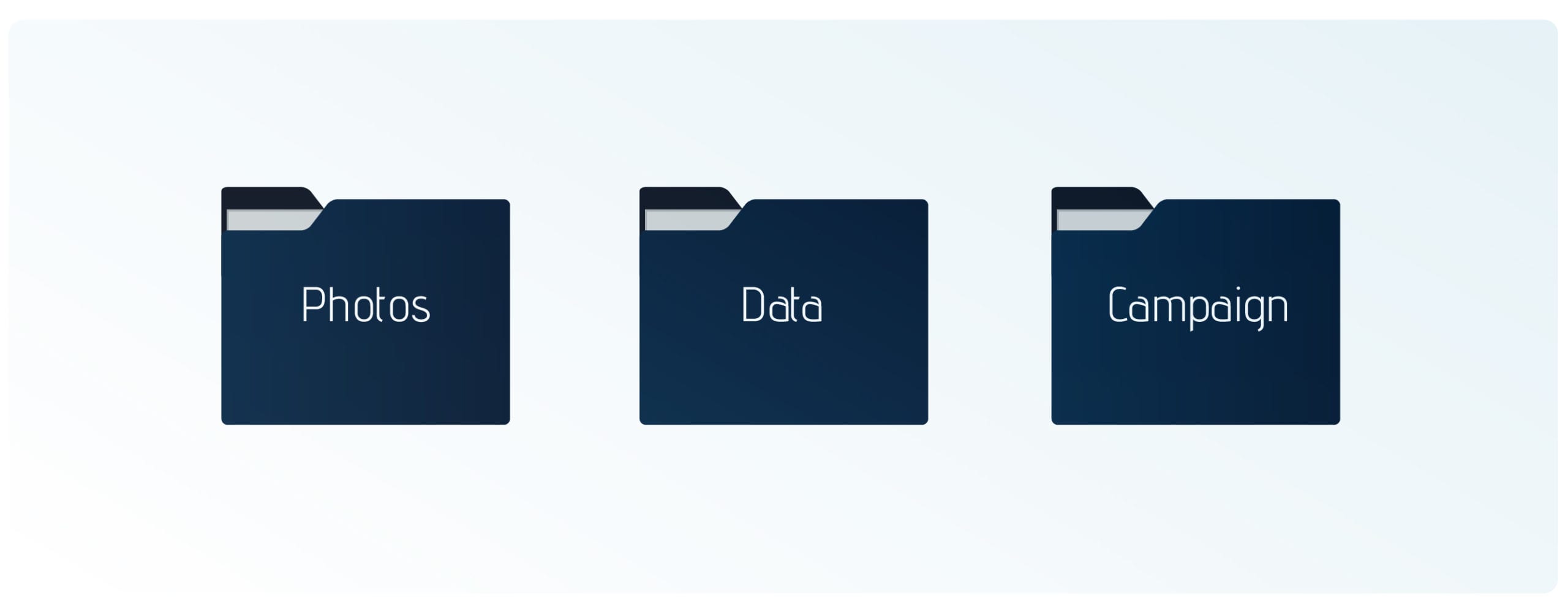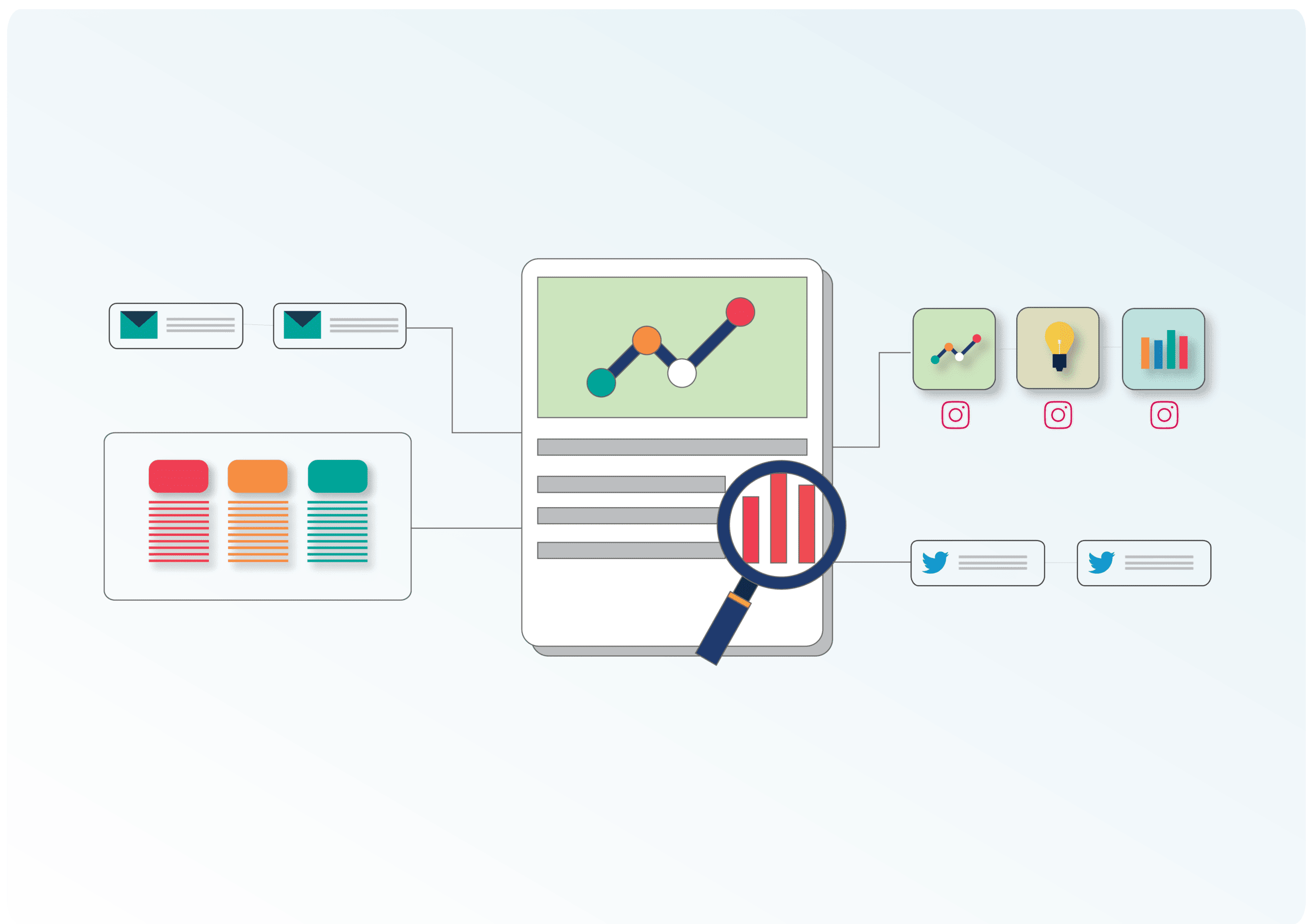Great content is always supported by a well thought out strategy. In the age of constant information consumption, content can be a valuable asset for the positioning of your brand.
What is content strategy and marketing?
The content strategy of a brand is the strategic planning of content management and distribution, as part of the overall branding strategy.
Content marketing, on the other hand, is the exact way that content will be tailored for the goal to attract and appeal to the target audience.
The two are connected processes, and the content strategy should always include a content marketing plan.
For example, the content strategy defines how much content will be produced during a given period, on which distribution channels, and how the assets will be managed. The content marketing plan will determine the “hook” that will attract consumers and how to retain their attention.
Who needs content marketing?
Any individual, company or another type of organization need content marketing to support their purpose and help deliver their message to a target audience. Consumers have come to expect regular updates, news, and information from the individuals and brands that they interact with.
That means that content plays a significant role in every business, brand or organization, and it is a powerful tool that can be used to increase reach and brand awareness.
Why is content marketing important for your brand?
A content marketing strategy makes it easy for a business to stay organized, and to deliver their brand message by using the right marketing channels. It sets the direction in which the brand will move, in order to improve the long-term positioning and credibility of the brand.
The strategy is used as a roadmap in a way, not only for the brand but for the consumer journey as well. A good content strategy should outline the goals of your content and the desired goals for the consumer.
The following tips will help you optimize your content process and production, to establish authority, and maximize audience reach.
TIP 1
Document your content strategy
That might be an obvious thing when you’re regularly producing content, but according to recent research done by Content Marketing Institute, while 78% of B2B brands said they have a content strategy in place, only 39% of them have it documented.
Documenting your strategy is important when it comes to aligning your content with the goals you’ve set for your brand. You can do that by setting specific and measurable long-term goals, combined with a short-term production/posting schedule.
When you’re clear on the goals you’re trying to reach, you will be clear on the decisions you have to make about the content you produce.

How to define and document your strategy
A clearly defined and documented content strategy can help you deliver the right content to your target audience. Here are 5 vital elements to consider:
- Create brand identity guidelines
- Create target audience personas
- Set clear goals and objectives for the upcoming period
- Create a content distribution calendar
- Set performance metrics and schedule regular reports
Think of it as a game plan for your content strategy. It sets the direction in which the brand will move, create content that delivers value and ultimately improve your positioning.
TIP 2
Optimize your content
There are rules and algorithms for digital content, so make sure that you optimize your content properly. That includes your website, social media and content formatting.

SEO Optimization: Optimizing your content for search engines can bring you an organic boost in traffic. Make sure that your website has structured pages and smart use of keywords, that relate to your content and your business.
Optimization is Important for both the consumer and the algorithm.
- Format
- Linking
- Menu Architecture
- Page Structure
- Content Hierarchy
Social Media Optimization: The profiles and posts on your social media should also be optimized for better reach. Make sure your bio section is informative and represents your brand in a great light. Properly format image and video sizes, pay attention to their quality and consistency.
Voice Search Optimization: Virtual assistants, artificial intelligence and things like hands-free use, are all becoming a part of our everyday lives. Think about the context of voice searches and the natural language that people use when they communicate with virtual assistants and create content that also caters to those needs.
TIP 3
Use the right platforms
To utilize your digital brand network efficiently, it’s important to understand the difference between all of your mediums, or in other words, the difference between platforms and channels.
Platforms are the foundation on which you can build your brand presence, such as the web, phone apps, social media, and gadgets.
Channels serve as a more direct means of communication and include email, advertising, search engines, chatbots, phone, and more.

A big part of organizing your content delivery system is finding a good balance between the platforms and channels that you use. It is important to be present on the right platforms for your brand.
Make sure you know where your audience hangs out online, so you don’t miss out on potential opportunities to connect with them.
Similarly, make sure you’re not wasting your time on platforms that don’t work for your brand and have low returns.
Tell stories in their native environment
Every social platform serves a different purpose. While your marketing campaign should retain the same messaging across all platforms, it is important to use every platform as it was intended.
When you’re planning the sponsored content that your campaign will include, take some time to consider how you need to present that content on the different platforms that you use.
The same goes for your social profile looks and descriptions. The goal here is to maintain a brand identity while you make use of what the platform has to offer.
TIP 4
Organize all content assets in a library
Get everything ready for fast production by collecting all the branding elements in a centralized library. That includes logo variations, re-usable design elements, color swatches, and so on.

To stay more organized and efficient, you need a centralized assets library that will be easily accessible to all team members and partners. Cloud-Based storage can be the solution in this case.
Having all the needed design resources in one place will help you with re-purposing certain elements, a faster, and more organized production.
TIP 5
Use a real voice
In recent research about Instagram, 2 in 3 respondents (66%) said that Instagram is a platform that allows them to interact with brands.
These interactions might take the form of a snack company using polls in Instagram Stories to let fans vote on a new chip flavor, or a fashion brand reposting photos consumer post.

Even with big brands, we all know that there is a person or there are people behind the content that that brand is marketing. Using phrases that don’t feel personal, can give off the impression that a machine is behind the things that you post, and that the content is a generic piece created with little care and personality.
Here are some content ideas that will help you showcase your brand voice and messaging:
- Educational content: How-to, Tips, Case studies
- Inspirational content: Ideas, Stories, Lists
- Community content: Behind the scenes, Events, Testimonials
- Trending content: News, Reviews, challenges
Experiment with different types of content and use the feedback you receive to learn what works best for your audience. With time, you will discover what they are looking for, and you will find your brand voice.
Related: 20 Brand Content Ideas for Your Strategy
TIP 6
Help your audience to connect
We are always looking for a way to connect, whether it is with ourselves, our community, or something with a bigger meaning. These types of connections can range from something serious like an awareness cause to something more playful like a fun challenge.
Connecting to ourselves is the search for improvement and wellbeing in all areas of our life, mental, physical, and spiritual. Content that helps your consumers form better connections between their problems and the solution can have a positive impact.
Connecting to a community helps us with the need to associate ourselves with like-minded people to re-affirm the status and input in the things we’re part of. Great brands should form great communities of people.
Connecting to something with a bigger meaning, makes us feel like we have a higher purpose than just the consumption of information or products. Having an important purpose can create a strong drive behind your brand, and the way you communicate with your consumers, and how you make them feel.

Our affiliate partners and e-mail tool of choice is SendInBlue. Using their toolbox you can optimize your communication with your audience, and best of all it’s free to use. Click the banner to visit their website and see more.
TIP 7
Use customer data to optimize your content
One of the upsides of producing a large amount of content is that you consequently collect large amounts of data. Don’t let that go to waste, instead, take advantage of machine learning and use it to improve your content.
Research from Econsultancy, in partnership with Google, shows how successful marketers are breaking away from the pack with a clear data and analytics strategy. In fact, nearly 2/3 of leading marketers say that decisions made with data are superior to those based on gut instinct.

There are three types of consumer data that you need to collect: behavioral data, demographic data, and predictive data.
How to create a data-driven content strategy
- Collect data about customers: demographics, behavior, and predictive data
- Observe, organize and analyze the initial data collected
- Create a report on the key learnings about customer behavior
- Set a path of experiments and tests on a small to medium scale based on your learnings
- Collect hard proof about your content strategy based on conversion
- Implement new solutions (Campaigns, Social Content, Web Optimization)
- Scale solutions across the brand network
Related: 3 Types of Customer Data to Optimize Your Content Strategy
TIP 8
Stay consistent with content quality
One of the best ways to establish authority and trustworthiness with your audience is by providing consistency with your content that they can depend on. That includes visual style, timing, and quality of content.
We often see brands that do a massive re-design that is not accepted well by the consumers. Our brains are good at creating habits around the things we do and connecting them to feel. When something you love and use completely changes, it feels like the reward of the feeling is taken away.

What should the brand feel like?
With the wide variety of products, services, and information out here to choose from, emotional investment has a big factor in consumer decisions. The feelings that the consumer attaches to a brand is the invisible feature that can make or break that relationship.
What should the brand sound like?
Self-expression is a large part of modern culture. Just like individuals, consumers expect brands to take a stand and contribute to their community in a meaningful way. Depending on the type of brand in question, this can range from important topics — such as social or political standing — to something less serious or even playful.
What should the brand look like?
The colors, visual language, and aesthetics that you use to paint your brand identity, products, and content should be well designed and coherent with your values.
Visuals, quality, and timing can all affect the reward system of the consumer, so make sure you place importance on staying consistent with your content.
Read more: 3 Simple steps to create strong brand guidelines
TIP 9
Creatively re-purpose content
A modular approach is the creative re-purposing of content either by dividing a big piece of content into multiple posts or by combining content on the same topic into a large piece of content.

Content repurpose example: A website that posts recipes can have 100+ pages of delicious meals. Extracting the vegetarian recipes and putting them together in a vegetarian recipe book is a chance for creating even more content.
It helps people who are more interested in vegetarian food find value, and it helps the brand create more content, to collect new leads, and increase authority over the subject of vegetarianism.
This can work with repurposing assets you already own, or by mapping for this approach when planning for future content.
How to generate content ideas and direction
- Do research about the topics that you want to address
- Organize your thoughts and research into topic categories
- Brainstorm specific ideas based on your topics
- Prioritize and start working out the most important ideas first
- Set goals and aspirations for the content you want to create
- Start creating now, you can edit and make it perfect later
What to do next
If you need more help with bringing your content strategy to life you can get our free guide on how to use content and build multichannel customer experience.
Finally, create content that will help you connect with your people, give them more than expected, and leave them feeling good about life.
How to Create An Omnichannel Content Strategy
Omnichannel content strategy is a plan for creating a consistent and uniform consumer experience across all of your brand platforms and channels.
Share this with your friends?
